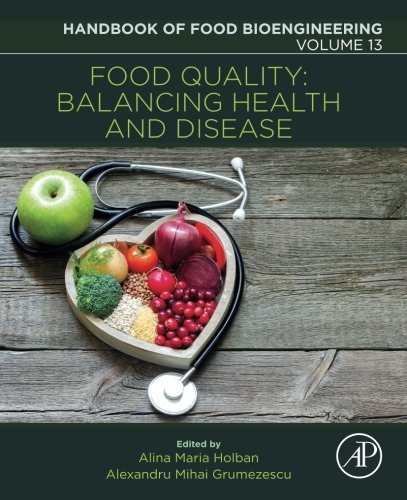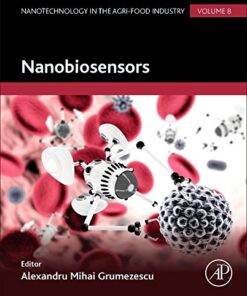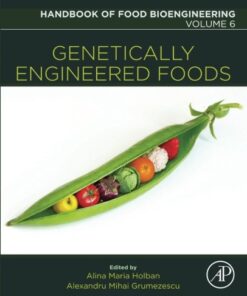(PDF) Food Quality – Balancing Health and Disease By Alexandru Mihai Grumezescu
$18.00
Download instantly Food Quality – Balancing Health and Disease By Alexandru Mihai Grumezescu. It is ebook in PDF format.
ISBN-10: 0128114428 ISBN-13: 9780128114421
Preview
This is the PDF eBook version for Food Quality – Balancing Health and Disease By Alexandru Mihai Grumezescu
Table of Contents
Foreword
Series Preface
Preface for Volume 13: Food Quality: Balancing Health and Disease
Chapter 1: Improvement of the Functional and Healthy Properties of Meat Products
Abstract
1. Introduction
2. Improvement of Nutritional and Healthy Properties of Meat Products
3. Production of Functional Meat Products
4. Current Status on the Consumer Acceptance for Functional Meats
5. Future Trends
Chapter 2: Biogenic Amines as Food Quality Index and Chemical Risk for Human Consumption
Abstract
1. Introduction
2. Composition, Nature, and Function of Biogenic Amines
3. Biogenic Amines in Foods of Animal Origin
4. Risks to Human Health and Legislation
5. Biogenic Amines Analysis
6. Biogenic Amines as Quality Index
7. Conclusions
Acknowledgments
Chapter 3: Marine-Based Toxins and Their Health Risk
Abstract
1. Introduction
2. Seafood Poisoning
3. Other Marine Biotoxins
4. Health Risk
5. Treatments of Marine-Based Food Poisoning
6. Prevention Aspects of Marine Toxin for Humans
7. Conclusions
Abbreviations
Chapter 4: Olive Oil Antioxidants and Aging
Abstract
1. Introduction
2. Nutraceuticals and Olive Oil
3. Oleic Acid: A Monounsaturated Fatty Acid with Antiaging Effect
4. Olive Oil’s Minor Components and Antiaging Effects
5. Tocopherols
6. Conclusions
Chapter 5: Heavy Metal Levels in Fish, Molluscs, and Crustacea From Turkish Seas and Potential Risk of Human Health
Abstract
1. Background
2. Fate of Heavy Metals in Marine Ecosystems
3. Risk Assessment of Heavy Metals in Human
4. Importance of Seafood in Turkey
5. Investigation of the Public Health Hazard
6. Selection of Heavy Metals and Their Toxicity
7. Estimation of Dietary Exposure to Heavy Metals
8. Intake Levels Calculation
9. The Mediterranean Sea
10. Aegean Sea
11. Sea of Marmara
12. Black Sea
13. Heavy Metal Levels in Fish Species
14. Heavy Metals in Crustaceans
15. Heavy Metals in Mollusc
16. Health-Risk Assessment for Fish and Other Seafood Consumption
17. Conclusions
18. List of Elements Names and Their Symbols
19. List of Species’ Latin, English, and Turkish Names and Their New Names
Abbreviations
Chapter 6: Trace and Major Elements Content of Cereals and Proteinaceous Feeds in Greece Analyzed by Inductively Coupled Plasma Mass Spectrometry
Abstract
1. Introduction
2. Research Data and Methodology
3. Results
4. Analytical Methodology on Minerals or Isotopes, and Their Implications for Characterization of Products With Specific Identity
5. Mineral or Trace Element Content of Feedstuffs or Foods After Genetic Modifications of Plants
6. Conclusions
Chapter 7: The Bioavailability of Nutrients That Have a Health-Promoting Effect on Nervous System Function
Abstract
1. Introduction
2. Healthy Lifestyle
3. Bioavailability of Food Products—Physiological Aspect
4. Processes and Bioavailability
5. Conclusions
Chapter 8: Agroindustrial By-Products and Animal Products: A Great Alternative for Improving Food-Quality Characteristics and Preserving Human Health
Abstract
1. Oxidation Processes and Antioxidants
2. Utilization of Agroindustrial By-Products in Livestock Diets
3. Conclusions
Chapter 9: Development of a Functional Food Security for Parents for Transgenerational Epigenetic Health Promotion and Disease Prevention Among Offspring
Abstract
1. Introduction
2. Family History and Epigenetic Inheritance
3. Nutritional Factors in Transgenerational Epigenetic Inheritance
4. Effects of Micronutrient Supplementation in Parents on Offspring
5. Development of a Micronutrient-Added Functional Food
6. Effects of High-Fat Diets in Parents on Offspring
7. Development of Functional Food Package for Parents
8. Development of a Blend of Oils That is Rich in Protective Nutrients
9. Fruits, Vegetables, Nuts, and Whole Grains, Including Legumes andMillets
10. Healthy Eating Patterns
11. Conclusions
Acknowledgments
Chapter 10: Heated Oil and Its Effect on Health
Abstract
1. Introduction
2. Thermal Oxidation of Cooking Oil
3. Oxidative Stress and Cardiovascular Disease
4. Role of Inflammation in Cardiovascular Disease
5. Heated Oil and Its Effect on Cardiovascular Risk Factors
6. Heated Oil and the Liver
7. Heated Oil and the Kidneys
8. Heated Oil and Bone
9. Discussion
Acknowledgments
Chapter 11: Contribution of Infant Formula and Tea on Daily Fluoride Intake and Prevalence of Fluorosis Among Infants and Children
Abstract
1. Introduction
2. Daily Fluoride Intake of Infants
3. Tea Consumption and Fluoride Intake in Children
4. Collection and Analysis of Infant Formula and Tea for Fluoride
5. Assessment of Fluoride Intake Through Infant Formula and Tea
6. Epidemiological Survey and Assessment of Prevalence of Dental Fluorosis
7. Influence of Infant Formula and Tea on Daily Fluoride Intake
8. Prevalence of Fluorosis, Habit, and Frequency of Tea Drinking
9. Habit and Frequency of Tea Drinking by Children in Study Villages
10. Recommendations
Chapter 12: Preventive and Therapeutic Effects of Dietary Fibers Against Cardiovascular Diseases
Abstract
1. Introduction
2. Incidence of Cardiovascular Diseases
3. Diet and CVD
4. Dietary Fiber and Its Role on Health
5. Effect of Dietary Fiber on Major CVD Risk Factors
6. Dietary Fiber, Gastrointestinal Health, and CVD
7. Physiological and Molecular Mechanism in CVD
8. Conclusions
Chapter 13: The Role of High Salt Intake in the Development and Progression of Diverse Diseases
Abstract
1. Introduction
2. High Salt Diet and Hypertension
3. High Salt Diet and Cardiovascular Diseases
4. High Salt Diet and Chronic Kidney Disease
5. High Salt Diet and Diabetes
6. Two Faces of Salt Intake Reduction
7. Understanding the Need of and Ways to Limit Salt Overingestion
8. Conclusions
Chapter 14: Spices and Herbs as Therapeutic Foods
Abstract
1. Introduction
2. Therapeutic Potential of Herbs and Spices
3. The Nutraceutical Potential of Herbs and Spices
4. Spices as Functional Foods
Chapter 15: Vitamin D Deficiency in Children: Health Consequences and Prevention
Abstract
1. Introduction
2. History
3. Characteristics of Vitamin D
4. Prevention of Vitamin D Deficiency
5. Conclusions
Index




